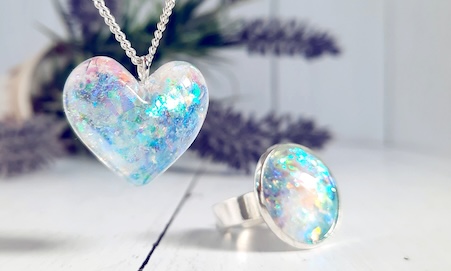While there’s no single right answer, there are many meaningful options available, all of which offer a sense of peace and remembrance.
Whether you’re planning ahead or making arrangements after a loss, we hope this guide will help you explore the possibilities.
1. Interment of the Ashes in a Grave
One of the most traditional choices is internment of the ashes in a grave at a cemetery or natural burial site. This can be a popular choice as it not only provides a permanent memorial for future generations but also offers friends and family a place for quiet reflection and visits.
By burying the ashes it also means you have the option to add a headstone or plaque as an additional way of remembrance and honoring the deceased.
You may choose a small new grave or add the ashes to an existing family grave, keeping loved ones together.
2. Place Them in a Columbarium or Barrow
For those who prefer an above-ground option, columbariums and barrows are thoughtful alternatives.
A columbarium is a wall or building with niches designed to hold urns. Whereas a barrow is a modern take on ancient burial mounds, often used as communal memorial spaces where urns are placed in stone chambers.
Both these options are dignified, protected from the elements, and also offer a dedicated space where people can visit and pay their respects.
3. Scatter the Ashes
Scattering ashes can be a powerful and symbolic gesture. Many choose places that held special meaning during their lifetime. Many popular sites in the UK include;
- On a mountaintops or hills
- National Trust sites
- In a private garden
- Sports venues
- At sea or along a favourite beach
Whilst in the UK there are no explicit laws against scattering ashes, it’s always advisable to check local regulations if you’re on public land, obtain permission of the landowner if on private land. If you are scattering ashes in the sea although no permission is required you need to comply with the Environmental Agency guidelines which are available here.
4. Keep the Ashes at Home
For some families, it feels right to keep the ashes close. For some they choose a decorative urn placed in a special area of the home. Others may look to a small keepsake urn or locket shared among family members.
Cremated ashes are clean and sanitary; you can keep them in the crematorium urn or personalised urn for as long as you need. This allows you to keep them close, in your home forever if that brings more comfort.
Keeping the ashes at home may also provide a temporary resting place before deciding on their final place of interment be it burial or scattering.
5. Create a Unique Tribute
There are many creative and personalised ways you can now memorialise a loved one. These include a range of options such as;
- Ashes into jewellery – wearable keepsakes like pendants or rings
- Biodegradable urns – designed to grow a tree as a living memorial
- Glass sculptures or artwork – incorporating ashes into handmade pieces
- Fireworks, vinyl records, or even space launches – for a truly memorable farewell
These tributes can reflect the personality, passions, or spirit of your loved one. Have a look at our Guide on ‘Ways to remember a loved one’ for more information on creating a lasting tribute for your loved one.
Final Thoughts
Deciding what to do with ashes is deeply personal and we hope the above guide assists you in the options available. Take your time, involve loved ones in the decision, and choose the path that honours the memory and meaning of the person you’ve lost.
Whether you opt for a traditional burial, a symbolic scattering, or a creative memorial, the most important thing is that it feels right for you and your family.



 Lines open now.
Lines open now.
